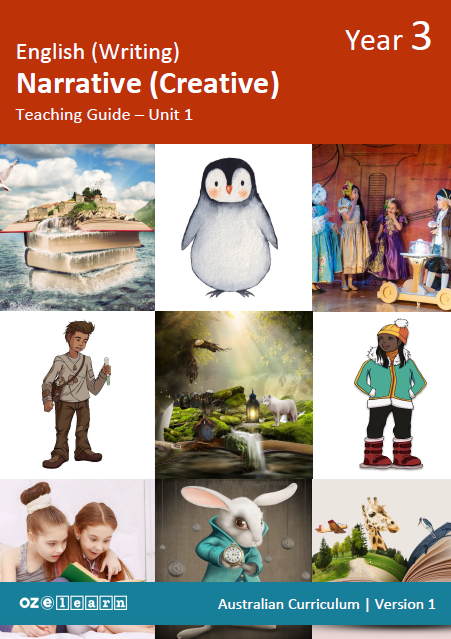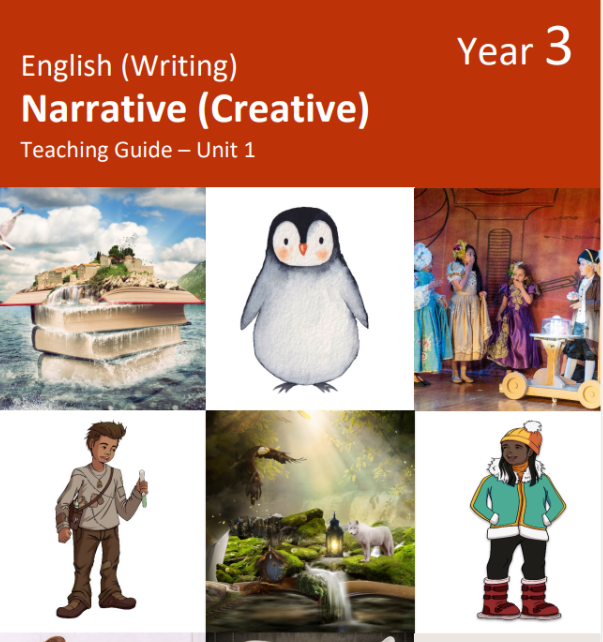Unit 1: Narrative (Creative) Year 3
Oz-e-Writing

Overview
Students will advance their narrative writing skills by exploring a range of storytelling elements and techniques. This unit focuses on creative narratives, where students learn to develop characters, craft vivid settings and construct an engaging storyline. They will also unpack the narrative theme of ‘wild nature’ and explore their own unique writing style. Students will develop the ability to use language features, create compound sentences and incorporate descriptive elements to enhance their narratives. Students will plan, write and edit different narratives and components throughout the unit.
Learning objectives
- AC9E4LA01 explore language used to develop relationships in formal and informal situations.
- AC9E4LA03 identify how texts across the curriculum have different language features and are typically organised into characteristic stages depending on purposes.
- AC9E4LA04 identify how text connectives including temporal and conditional words and topic word associations are used to sequence and connect idea.
- AC9E4LA06 understand that complex sentences contain one independent clause and at least one dependent clause typically joined by a subordinating conjunction to create relationships, such as time and causality.
- AC9E4LA08 understand how adverb groups/phrases and prepositional phrases work in different ways to provide circumstantial details about an activity.
- AC9E4LA11 expand vocabulary by exploring a range of synonyms and antonyms.
- AC9E4LE02 describe the effects of text structures and language features in literary texts when responding to and sharing opinions.
- AC9E4LE03 discuss how authors and illustrators make stories engaging by the way they develop character, setting and plot tensions.
- AC9E4LE05 create and edit literary texts by developing storylines, characters and settings.
- AC9E4LY03 identify the characteristic features used in imaginative, informative and persuasive texts to meet the purpose of the text.
- AC9E4LY06 plan, create, edit and publish written and multimodal imaginative, informative and persuasive texts, using visual features, relevant linked ideas, complex sentences, appropriate tense, synonyms and antonyms, correct spelling of multisyllabic words and simple punctuation.
Teaching resources
- 45 lessons
- Teaching Guide
- marking rubric
- progressive and summative assessments
- Student Workbook
- Student Assessment Workbook.
- Lesson resources (games, activities, worksheets, images)
Assessment
Progress tests
Weeks 3 and 6 40%
Each Progress Test is worth 20% (8% content, 12% writing)
A progress test will be completed during week 3 and 6 of the unit.
Each progress test will include two assessment tasks. One will assess the content taught during prior weeks and the other will assess writing.
- Provide opportunities for continuous assessment and feedback. These ensure students are evaluated on a broad range of skills, promoting balanced evaluation of material
Summative Test
Final Assessment is worth 60% (60% writing)
One assessment task will be completed during week 9 of the unit.
The writing assessment will cover four components: Planning, writing, editing and content (weeks 1–8). The summative task provides a thorough evaluations of students abilities. This approach ensure that students are evaluated on their overall mastery of the subject, with an emphasises being on writing skills.



Responses